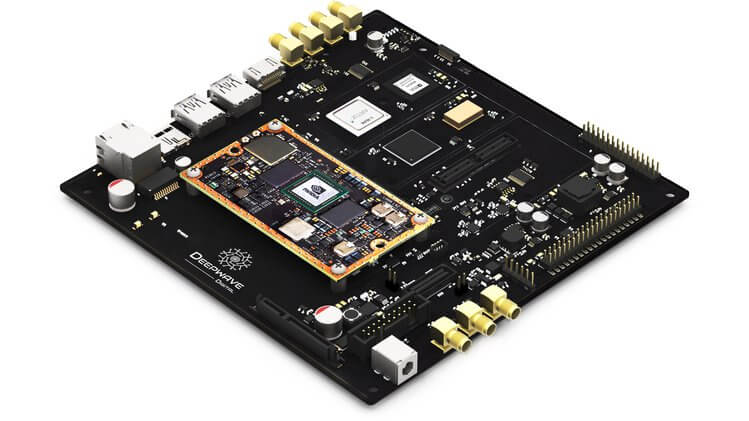Artificial Intelligence Radio – Transceiver Now Released for Crowdfunding
Last week we posted about the Artificial Intelligence Radio - Transceiver (AIR-T), which was awaiting release for crowdfunding. Today the Crowd Supply campaign for it has gone live.
As expected, the AIR-T is not a cheap with it coming in at US$5,699, and this is with a 10% discount off the MSRP. However, the AIR-T is likely to be more of interest to high end industry and university researchers who have research money to spend. Also, compared to Ettus E310/N310 and LimeNET Mini SDRs which have built in non-GPU based computing platforms and similar SDR performance, the AIR-T could be seen as reasonably priced assuming that the software and drivers for it are decent. In the future we expect to see the price of similar SDR-AI development boards eventually reduce down to hobbyist level prices.
The basic idea behind the AIR-T is to combine a 2x2 MIMO SDR transceiver with a NVIDIA Jetson TX2 GPU that can be used to run artificial intelligence (AI) software fast. They will include software that will allow GNU Radio and Python code to be easily ported to the GPU architecture.
Why build tomorrow’s tech with yesterday’s signal processing tools? The Artificial Intelligence Radio - Transceiver (AIR-T) is a fully integrated, single-board, artificial intelligence equipped, software defined radio platform with continuous frequency coverage from 300 MHz to 6 GHz. Designed for new engineers with little wireless experience to advanced engineers and researchers who develop low-cost AI, deep learning, and high-performance wireless systems, AIR-T combines the AD9371 RFIC transceiver providing up to 2 x 2 MIMO of 100 MHz of receiving bandwidth, 100 MHz of transmitting bandwidth in an open and reprogrammable Xilinx 7 FPGA, with fast USB 3.0 connectivity.
The AIR-T has custom and open Ubuntu software and custom FPGA blocks interfacing with GNU Radio, allowing you to immediately begin developing without having to make changes to existing code. With 256 NVIDIA cores, you can develop and deploy your AI application on hardware without having to code CUDA or VHDL. Freed from the limited compute power of a single CPU, with AIR-T, you can get right to work pushing your telecom, defense, or wireless systems to the limit of what’s possible.

Cool board, but the campaign page lacks important information:
1) What are RF characteristics of this board? RF gains and sensitivity? Clearly for device this price such information should be available.
2) Are the board schematics available? What analog filters are used on RX and TX side?
3) It takes more than AD9371 to make an SDR and additional circuitry is need, here we know nothing.
4) Are there any prototypes of the board? Clearly the image is an artistic rendering. Moreover, according to this tweet Ignore the clearly wrong text, it would seem there are no prototypes yet.
5) What is the status of the software? Is it opensource? I found some mentions of Gnu radio OOT block for it but nothing else. Not to mention FPGA blocks…
6) Running GNU radio blocks on GPU in quite difficult currently due to some architecture decision inside GNU radio itself. What is their approach to this?
7) And many more…